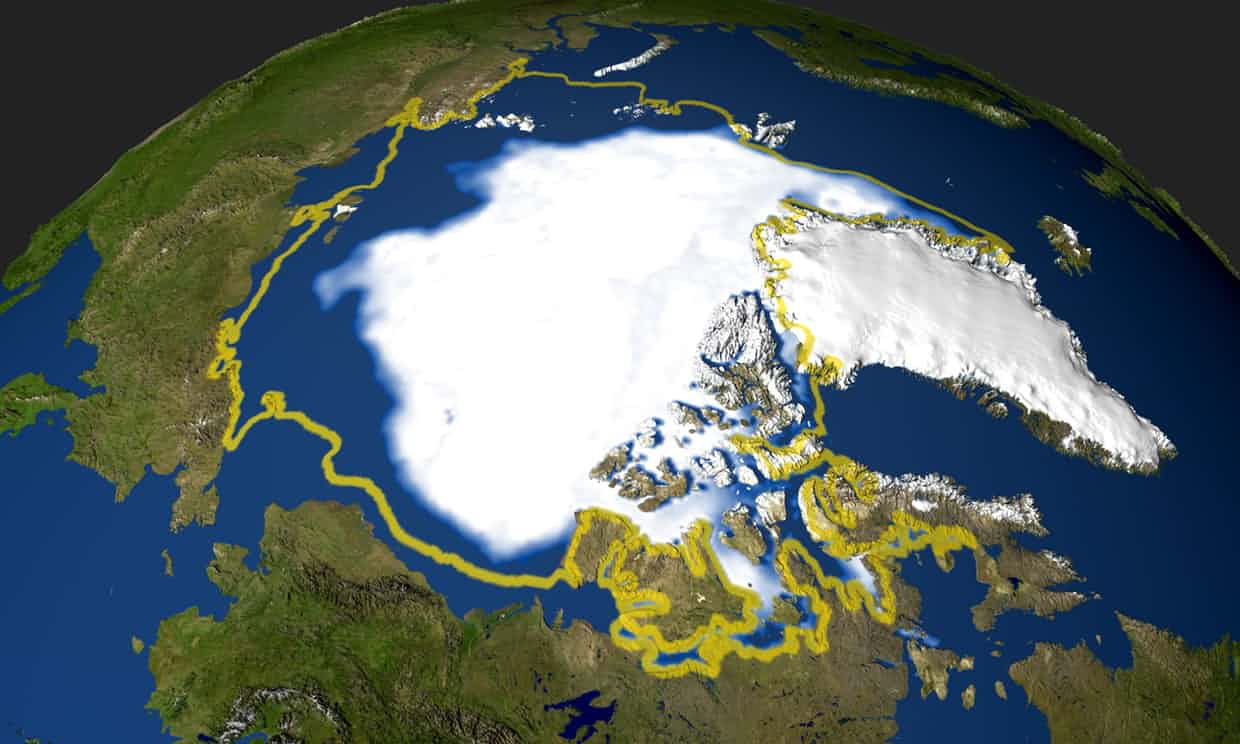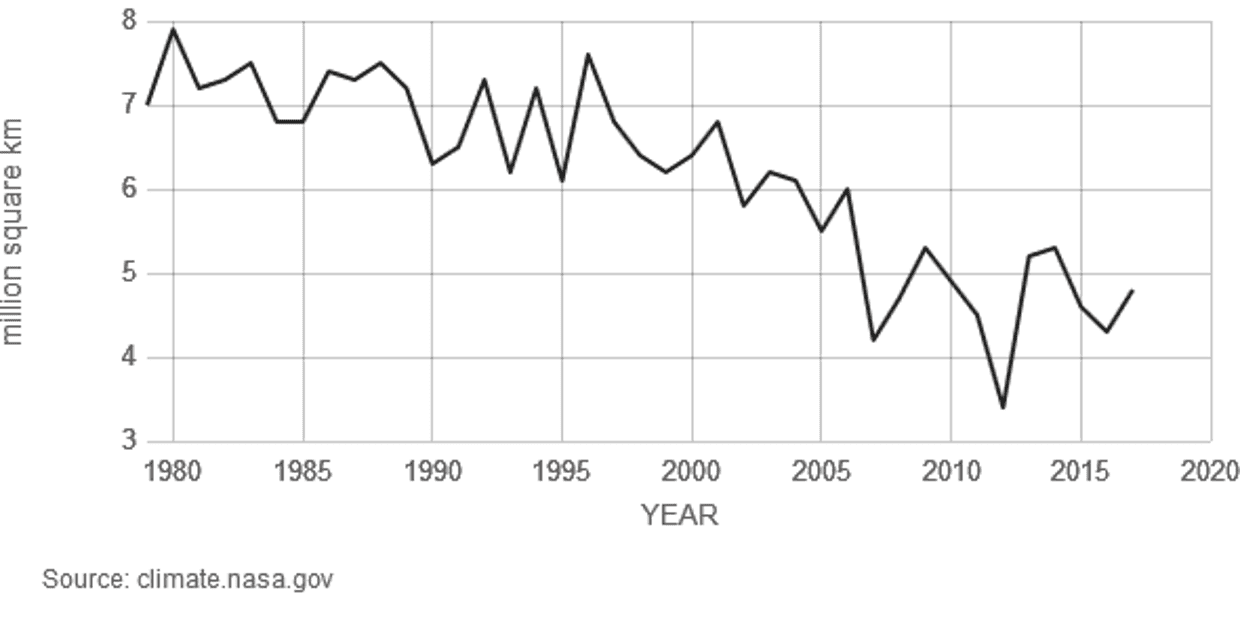
Nasa satellite photo of the minimum extent of Arctic sea ice in 2005 that occurred on September 21, when the sea ice extent dropped to 2,05 million square miles (53 094 969 million square kilometers). Photograph: HO/AFP/Getty Images
The Arctic is one of the “canaries in the coal mine” for climate change. Long ago, scientists predicted it would warm quicker than other parts of the planet, and they were right. Currently, the Arctic is among the fastest-warming places on the planet. Part of the reason is that as the Arctic warms, ice melts and ocean water is uncovered. The ocean is darker than ice so it in turn absorbs more sunlight and increases its warming. This is a feedback loop.
Another reason is that the Arctic doesn’t get that much sunlight so increased energy from the atmosphere has a bigger influence there than it would have elsewhere.
Scientists have looked to the Arctic for clues and hints of human climate change over the past decades. The fact that the Arctic is warming has led to a 70% reduction in the volume of summer sea ice – an enormous loss of ice.

A recent paper just published in the Journal of Climate by the American Meteorological Society takes an in-depth look at how fast the Arctic ice is melting and why. According to the paper, the authors completed a detection and attribution study of Arctic sea ice decline from 1953 to 2012. That is 60 years of data that tell the picture of climate change. The “detection” part of this study was about detecting what long-term trends are apparent over these six decades. The “attribution” part of the study is figuring out what is the cause of the trends.
Why six decades? Well the authors wanted to go back as far as they could while still accessing high-quality records of the ice extent. They used three different sets of data that record the extent of ice in the region.
In terms of attribution, the authors looked for “fingerprints” of human activity. Humans emit greenhouse gases that trap heat. We know that and we have known that for a long time. Greenhouse gases make the Arctic warmer. But, other things are happening too. There are natural changes to the Arctic. There are also other human pollutants that affect the ice. For instance, humans emit small particles called “aerosols” that can get into the atmosphere and block sunlight. So, these human aerosol emissions can actually cause cooling.
The authors concluded that the combined cooling effect from human aerosols was detected in all three datasets of ice. That means, it didn’t matter whose measurements you used – the effect of aerosol cooling was present.
So how much of an effect do aerosols have? It turns out 23% of the warming caused by greenhouse gases was offset by the cooling from aerosols. Unfortunately, this isn’t good news. It means that if/when humans reduce our aerosol pollution, the warming in the Arctic and the ice loss there will be worse.
This puts us into a Faustian bargain. We want to reduce airborne pollution, like sulfur aerosols. But, if we do that, it makes the effects of greenhouse gas pollution worse.
The cooling effect of aerosols has been known for a long time. We see it when certain volcanoes erupt. Some volcanoes inject tons of aerosols into the stratosphere which temporarily block some sunlight for a few years. Human aerosols work in much the same way. They stay airborne for a few years, reflecting sunlight, before they are cleaned out of the atmosphere. This process has led some people to speculate that we could reverse global warming by just injecting pollution into the atmosphere. This short-sighted geo-engineering is replete with unintended risks.
So we know that these aerosols have hidden some of the effects of greenhouse gases in the Arctic. What does this mean long term (aside from geo-engineering nonsense)? I asked Arctic writer Neven Curlin what his thoughts were. He maintains the go-to site for updated news on the Arctic and its ice. He told me,
Arctic sea ice loss is already bad news, and this research comes on top of it. It’s amazing to think that the loss could’ve been even faster, if it hadn’t been for this dampening effect. If reducing the emissions of aerosols leads to an even faster warming of the Arctic, this will only further decrease the temperature gradient between the pole and the equator, likely adding to the destabilisation of Northern Hemisphere weather patterns. Never mind the longer term risks tied to sea level rise, methane release and changes to ocean currents. Not reducing aerosols isn’t an option, either, and so we find ourselves in quite a predicament. Hopefully future research will show that the number is actually lower.
He also reiterated the importance of this topic. He told me that we need more young minds to study the cryosphere; we need more data to help us understand the long-term trends. To gather that data, we need more and better equipment. This is a great example of how a small investment now can pay huge dividends in the future.
So, that give us some context about whether aerosol pollution is good or bad for us. Regardless, the “canary in the mine” is speaking and we should be listening. Humans have our fingers on the solutions to climate change – we only lack the will.